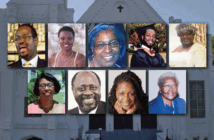John Wimberly reports how creating a team of four teachers for each children’s Sunday school classroom had the paradoxical effect of easing the burden of recruiting teachers at Western Presbyterian Church in Washington, DC. It also led to a greater sense of camaraderie and more creative problem solving.
I had been having the same conversation with Christian educators at Western Presbyterian Church for years. Frustrated, even angry, each one came to me saying, “I simply cannot get anyone to teach Sunday school. I’m using most of my time recruiting rather than supporting teachers and students. Our members say they don’t want to miss worship to teach, or they don’t want to have to come to church every week for a month while they teach because they have other things to do on some of those Sunday mornings. I have tried everything and everyone, and I just can’t get enough teachers.”
The creative approach to caring for and educating a child that developed in our new team approach led to wonderful strategies and a sense of camaraderie.
Actually, we had tried everything except one: teams. We decided to create a team of approximately four teachers for each Sunday school class. This actually meant recruiting more, rather than fewer, teachers. However the entire group, not one or two teachers, would be responsible for teaching the class. By spreading the responsibility across a group, we hoped and prayed that more people would say “yes” to teaching.
The Christian education committee members knew the current system was not working well due to a lack of teachers; however they didn’t like the idea of teams. Their concern about teams was channeled into a fair question: “If we can’t get two people to teach each class, how will we ever get four?” But after a couple of months of discussion during which the members, in good biblical fashion, gnashed their teeth, the committee voted to make the move to teams.
We were surprised at the response we received when we asked people to be part of one of the teams: “So I don’t have to be there every Sunday?” “I can trade off with another team member if something comes up at the last minute?” “We use teams at work, and I enjoy them.” In contrast to our prior struggles recruiting people to teach, we were able to fill the teams without twisting too many arms.
Emergency Coverage
As the teams began to function, wonderful things started to happen. First, our phones didn’t ring early almost every Sunday morning with a frantic teacher saying, “My daughter is sick, and I can’t make it this morning. Can you cover for me?” Instead, the teacher with the sick daughter called a teammate who came to the rescue. The Christian educator on our staff did not have to be the substitute teacher.
Creative Problem Solving
Second, teachers began to share important insights about their students with one another. When “Jimmy” acted out, the team called a meeting and developed a strategy to work with him and his parents. No one teacher felt responsible for Jimmy. They all felt responsible. The creative approach to caring for and educating a child that developed in our new team approach led to wonderful strategies to keep Jimmy engaged in class. Jimmy’s parents came to me and expressed gratitude for the way the team was caring for their son.
Camaraderie
Third, the teams developed a sense of camaraderie. People who didn’t know each other became friends and trusted each other. The bonds that developed in the Sunday school wing of the church were among the strongest in the congregation.
With the success we witnessed using teams for Christian education, Western began to use teams in many other areas of its life — ushering, caring for the facilities, providing flowers for worship, and setting up the chancel, to name a few. Members who had previously been uninvolved in anything other than attending Sunday morning worship were mobilized as team members for important tasks in ministry. Technically, I suppose the engagement of more members wasn’t a miracle, but it felt miraculous to those of us who recruited members for various jobs in the congregation.
This article is adapted from John W. Wimberly’s book Mobilizing Congregations: How Teams Can Motivate Members and Get Things Done (Rowman and Littlefield, 2015). It is available through Amazon.
Related Resources:
- Ten Hints for Leading Volunteers by Jill Fox
- 50 Ways to Increase Active Engagement by Lewis Center
- Five Characteristics of Effective Ministry Teams by Ann A. Michel







